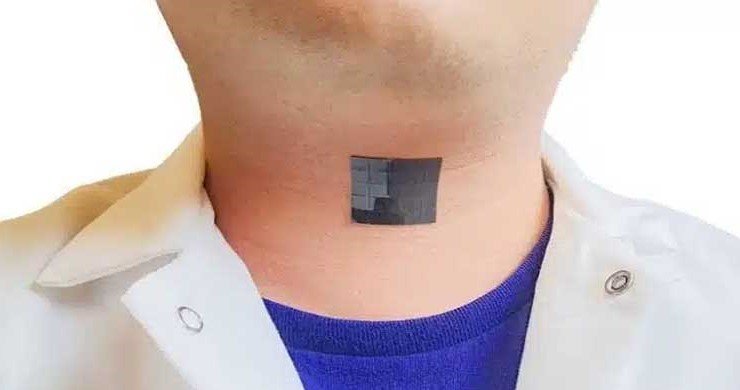The dawn of a new era in assistive communication has arrived with the unveiling of an extraordinary breakthrough by UCLA engineers – the AI-Powered Wearable Device. This remarkable innovation promises a lifeline for individuals confronting communication barriers stemming from conditions like laryngeal cancer surgeries or vocal cord dysfunction. Published in the esteemed journal Nature Communications, this cutting-edge device heralds a monumental leap forward, potentially revolutionizing communication and significantly improving the lives of those affected.
Central to this groundbreaking technology is the AI-Powered Wearable Device, a compact marvel about the size of a square inch, designed for easy placement on the skin adjacent to the throat. Unlike conventional communication aids relying on external synthesizers or invasive procedures, this device taps into bioelectric signals from larynx muscles, boasting an impressive accuracy rate nearing 95% in generating articulate speech.
Under the leadership of Jun Chen, UCLA’s team of engineers and researchers orchestrated a fusion of brilliance, resulting in a device comprised of two core elements: a self-powered sensing unit and an actuating unit. Crafted from state-of-the-art silicone and magnetically induced layers, these components harness innovative materials and techniques to achieve their extraordinary functionality.
The sensing unit employs magnetoelastic technology, a revolutionary method detecting laryngeal muscle movements. These movements are then converted into electrical signals, subsequently processed through a sophisticated machine-learning algorithm. This algorithm serves as the linchpin, deciphering and transforming electrical signals into coherent speech signals, ensuring precise and natural-sounding output.
Concurrently, the actuating unit springs into action, furnishing the requisite current to the motor. Derived from the processed electrical signals, this current propels the motor to emit audible output, effectively transmuting electrical signals into articulate speech. Seamlessly integrating sensing and actuation components facilitates real-time communication, empowering users to articulate themselves with clarity and confidence.
What distinguishes this technology is not only its unparalleled accuracy but also its non-invasive approach and user-centric design. By obviating the necessity for invasive procedures or external voice synthesizers, this wearable device presents a more convenient and inconspicuous solution for individuals grappling with communication hurdles. Its diminutive dimensions and skin-friendly construction ensure comfort and effortless integration into daily routines.
In essence, the AI-Powered Wearable Device represents a beacon of hope, promising to restore the voice to those who have lost it and paving the way for a more inclusive and connected future.


